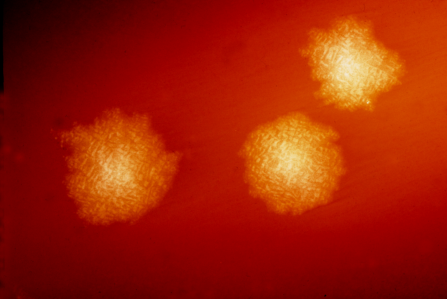Infectious diarrhea spores survive high temperatures of hospital laundering

Washing contaminated hospital bedsheets in a commercial washing machine with industrial detergent at high disinfecting temperatures failed to remove all traces of Clostridium difficile (C. difficile), a bacteria that causes infectious diarrhea, suggesting that linens could be a source of infection among patients and even other hospitals, according to a study published today in Infection Control & Hospital Epidemiology, the journal of the Society for Healthcare Epidemiology of America.
"The findings of this study may explain some sporadic outbreaks of C. difficile infections in hospitals from unknown sources, however, further research is required in order to establish the true burden of hospital bedsheets in such outbreaks," said Katie Laird, Ph.D., Head of the Infectious Disease Research Group, School of Pharmacy, De Montfort University, Leicester, United Kingdom and lead author of the study. "Future research will assess the parameters required to remove C. difficile spores from textiles during the laundry process."
Researchers inoculated swatches of cotton sheets with C. difficile. The swatches were then laundered with sterile uncontaminated pieces of fabric using one of two different methods—either in a simulated industrial washing cycle using a washer extractor with and without detergent or naturally contaminated linens from the beds of patients with C. difficile infection were put through a full commercial laundry where they were washed in a washer extractor (infected linen wash) with industrial detergent, pressed, dried, and finished according to current the National Health Service in the United Kingdom's healthcare laundry policy (Health Technical Memorandum 01-04 Decontamination of Linen for Health and Social Care (2016). Researchers measured the levels of contamination before and after washing.
Both the simulated and the commercial laundering via a washer extractor process failed to meet microbiological standards of containing no disease-causing bacteria, the study found. The full process reduced C. difficile spore count by only 40 percent, and this process resulted in bacteria from the contaminated sheets being transferred to the uncontaminated sheets after washing.
Researchers concluded that thermal disinfection conditions currently required by the UK National Health System are inadequate for the decontamination of C. difficile spores. There may be potential to spread C. difficile back into the hospital environment as linens could be a source for outbreaks at other healthcare facilities through businesses that collect, launder and redistribute rented linens to multiple hospitals and care facilities, as is the case at NHS facilities.
The research team, which also includes Ph.D. student Joanna Tarrant, is working closely with the Textiles Services Association in the UK to continue research to find which combination of laundering parameters will remove C. difficile spores from hospital bedsheets.
More information: Joanna Tarrant et al, From ward to washer: The survival of Clostridium difficile spores on hospital bed sheets through a commercial UK NHS healthcare laundry process, Infection Control & Hospital Epidemiology (2018). DOI: 10.1017/ice.2018.255
















